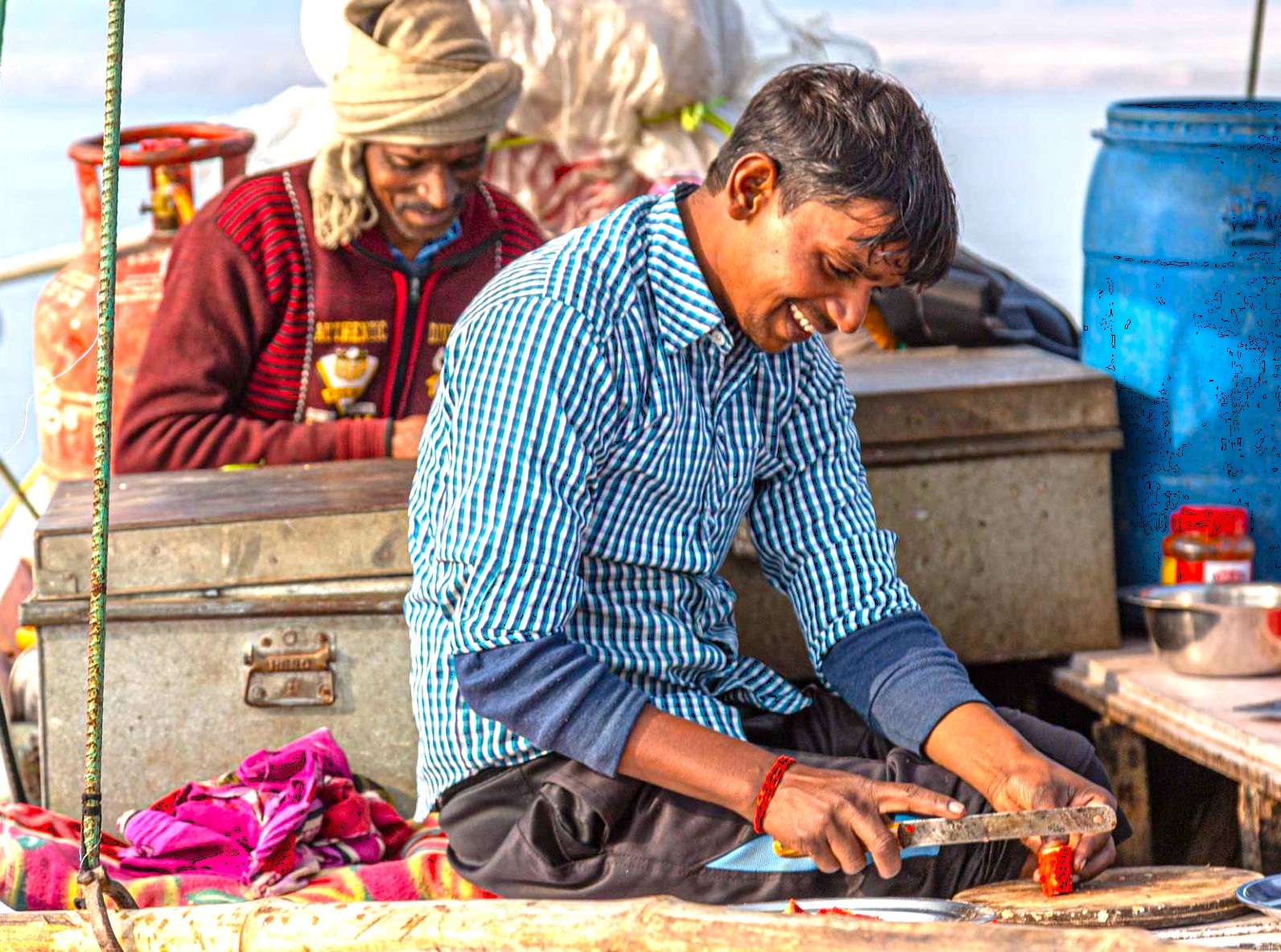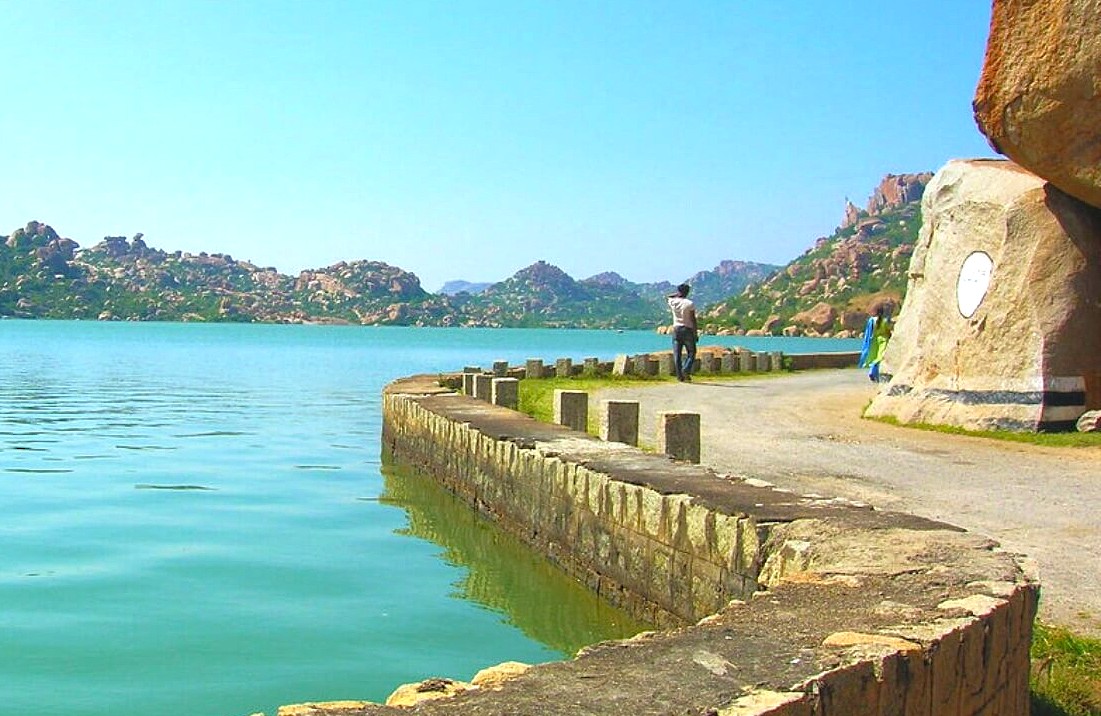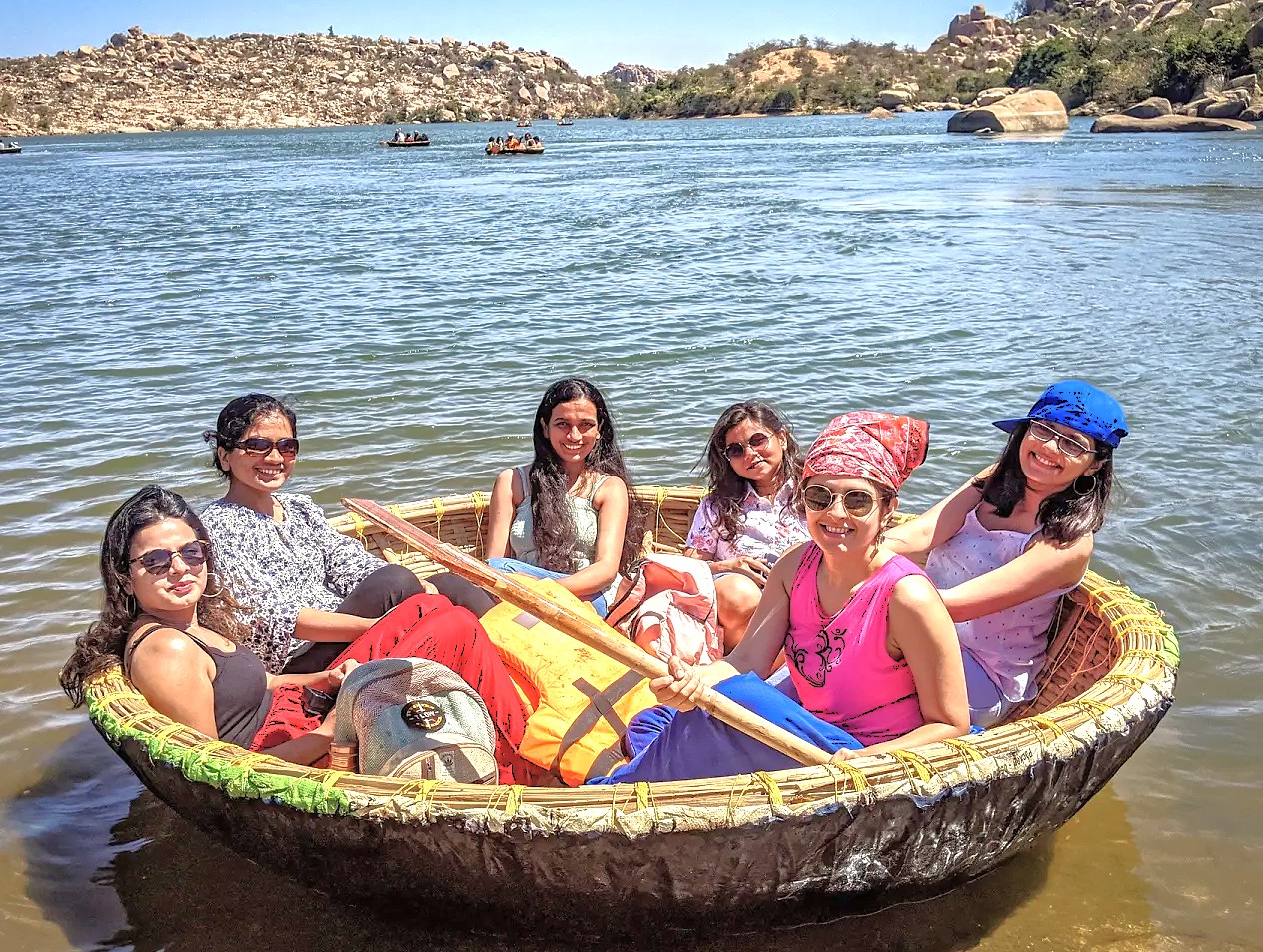Echoes of Ancient Lands
Sanapur Lake Hampi India
Mother Masala Tours
A Spectacular Water Haven
Sanapur Lake Hampi India. Set amongst the breathtaking landscape of Hampi, Sanapur (Hampi) Lake offers us more than just a peaceful getaway. Built as an irrigation reservoir created by the Vijayanagara Dynasty in the 16th century, the lake served as a lifeline for agriculture and the local villages that thrived around it. The Vijayanagara kings believed strongly in using nature to sustain communities, with ingenious systems of canals and reservoirs - all perfectly planned for functionality and grace. Throughout centuries of invasions and battles, the Lake stood resilient. Stories from locals hint that its calming waters were not just a source of life but also a silent witness to history, with warriors resting by its shores before their final fight.

Sanapur Lake Hampi India: Sacred Spaces
Sanapur Lake Hampi India. The formation of the Lake's surroundings speaks volumes about the sacred traditions of the Vijayanagara Dynasty. While the lake itself is primarily a man-made reservoir, its proximity to the enduring temples of Hampi ties it deeply to spiritual traditions. For centuries, locals have used this lake as a source of cleansing before paying their respects at temples, believing its waters possess purifying properties. While walking along its edges, we find generations-old stone carvings, inscriptions, and small shrines that reinforce the intricate relationship between water sources and their sacred importance in this region.
Ancient Mosaics: Impeccable Craftsmanship

Although the lake itself may not feature mosaics in the traditional sense, the surrounding environment offers an artistry of a different, equally captivating kind. The magnificent granite boulders that gracefully encircle the lake, meticulously sculpted by nature over millions of years, stand as a profound testament to Earth's craftsmanship. Their rugged surfaces, etched with patterns from erosion and weathering, unveil a natural mosaic that mesmerizes all who behold it. This phenomenon invites admiration - how natural forces can create beauty on a grand scale.
Festivals of Devotion: Honouring the Sacred and the Divine
Sanapur Lake Hampi India. The annual Purandaradasa Aradhana music festival reflects the vibrant traditions of the people around Hampi and Sanapur Lake. It honors Purandaradasa, a 16th-century poet and composer with ties to Karnataka, through devotional songs and classical music performances near the sacred Tungabhadra River. Held in February, this festival draws participants who chant traditional verses and honor divine energy. Near the Lake, locals also celebrate Sankranti, a harvest festival typically occurring in January. Women craft traditional rangoli, and offerings of freshly harvested grains are an important part of the ritual.
The Pulse of the Local Community

What makes the atmosphere around Sanapur Lake unique is the harmonious way people have connected with its waters for centuries. Living near this wonderful formation, the locals display a mesmerizing warmth and simplicity. You can observe men tending to green fields or guiding livestock along the banks, while women manage crops or share a quiet conversation by the water's edge. Children play with joy, their presence a constant reminder of generations tied to this land. Agriculture remains the lifeblood of villages and families depend on the fields irrigated by the reservoir’s system.
A Culinary Journey: Savor the Flavour
Sanapur Lake Hampi India. The region around the Lake treats us to local delicacies primarily drawn from traditional South Indian flavors. Ragi mudde, a nutritious millet ball, often pairs with spicy sambhar, providing a wholesome meal. Another specialty here includes tamarind rice, laced with tangy spices. Served on banana leaves, these dishes represent a fusion of natural and cultivated ingredients. Coconut chutney and dishes crafted with locally grown lentils complete meals here, promising both simplicity and taste deeply rooted in local traditions.
Capturing the Magic: A Photographic Haven

The landscape is dominated by the region's signature feature: immense, ochre-coloured boulders scattered around a serene reservoir. This natural contrast between rugged stone and calm water is the primary subject for any photographer here. For the most striking images, visit during the golden hours. At sunrise or sunset, the low-angle light ignites the boulders with a reddish glow, creating beautiful reflections on the water. We find small coracle boats - a classic, timeless element to our compositions. The area provides ample opportunity for landscape shots, and rock textures against the water.
Ancient Technologies: Sacred Sound, Geometry & Astrological Influences
Sanapur Lake Hampi India. The ingenuity of the lakes engineers transcended basic utility and reflected a deeper understanding of nature’s rhythm. Its reservoir-style construction mirrors sacred geometry principles that focus on harnessing natural elements. In sacred geometry, water bodies like Sanapur are known to create reflective and calming energy fields, offering a peaceful mental state to those around them. The layout of the irrigation system also aligns functionally with the flow of surrounding natural elements, maximizing efficiency while minimizing disturbance. The structures’ elements are thought to naturally amplify calming Solfeggio tones - especially frequencies such as 396 Hz, associated with releasing fear, and 528 Hz, which is linked to inner harmony.
The Connection with the Gods

The area surrounding Sanapur Lake reflects a deep reverence for Hanuman, powerfully anchored by nearby Anjaneya Hill, widely believed to be his sacred birthplace. The white temple crowning its peak serves as a constant beacon for devotees. In local lore, Hanuman - the deity of immense strength and unwavering devotion - is a divine guardian, watching over the lake and its community, his spirit felt in the rugged landscape itself. The epic journey of Rama and Sita is woven throughout this region, their search for each other playing out across these very vistas.
Serendipitous Meetings: Beyond the Main Path
Sanapur Lake Hampi India. Wandering nearby reveals us to countless hidden gems, from small hand-milling operations to potters shaping clay into elegant vessels with precision. Passing through narrow byways, we often stumble upon craftsmen carving deities into granite, keeping alive an art form that has endured since the Vijayanagara Dynasty.
Resilience and Renewal: Overcoming Adversity’s Challenges

Sanapur Lake Hampi India. Under the visionary rule of the Vijayanagara Dynasty, sophisticated irrigation plans were engineered, allowing agricultural life to flourish across the region. These vital water systems transformed the arid landscape, supporting a thriving population and the backbone of the empire’s prosperity. However, this ingenuity was constantly tested by the powerful monsoons. The rains that nourished the crops, caused breaches in the embankments. Locals used stone and earth to make repairs, driven by a will to protect their livelihoods.
Urban Legends: Strange Sightings, Myths and Mysteries
While the Lake is a man-made reservoir, its location is steeped in legends from the Ramayana epic. The entire Hampi landscape is believed to be the ancient monkey kingdom of Kishkindha. Folklore suggests the giant boulders dotting the area were thrown during the mythical battle between the vanara brothers, Vali and Sugriva. The lake’s tranquil waters echo the sanctity of the nearby sacred Pampa Sarovar, where goddess Parvati performed penance for Lord Shiva, and where Lord Rama met his devotee Shabari during his quest.
Get Your Gear Ready - We’re Off

Sanapur Lake Hampi India. Come and experience the enduring magic of Sanapur Lake, a world away from the everyday rush. Here in Hampi, time moves differently. Let the gentle currents guide you as you drift across its calm, reflective waters, the only sound the soft dip of a coracle paddle. Climb the sun-warmed granite formations that have stood for millennia; from their heights, a breathtaking panorama of this ancient landscape unfolds, offering a perspective found nowhere else. Immerse yourself in centuries of living history, not just in stone ruins, but in the daily traditions of the local community.
Symphony of Generosity: Offerings from Wanderers to Residents
What truly sets this area apart is the remarkable way travellers and locals foster a shared atmosphere of generosity. It’s a place where connections are made with ease—over exchanged meals, in the patient teaching of an ancient craft, or through the simple sharing of stories. This beautiful and unforced cultural interplay has transformed Sanapur Lake from a peaceful locale into a living, breathing community. It thrives on a palpable, collective spirit that welcomes visitors not as tourists, but as participants in its daily rhythm.